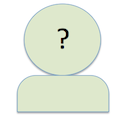2012-03-21
#10 on the Midterm.
Originally Posted By: stilsons
Hi.
Here is # 10. You start with {a, not b}, {b, not c}, {c}, {not a}. Number those items 1 to 4.
Then, take 1 and 4 and resolve {a, not b} and {not a} together to get {not b} (item # 5).
Then, take 2 and 3 and resolve {b and not c} and {c} together to get {b} (item # 6).
Then, take 5 and 6 together and resolve them to the empty set {}. Therefore, you've refuted it. All four items can't stand together.
You would use this technique if you wanted to prove a statement from someone else. You would take the opposite of their statement, and prove that the opposite can't stand. So, the original statement is proven good (since it's opposite is an empty set).
QED!
Steve Stilson SCJA
Here is # 10. You start with {a, not b}, {b, not c}, {c}, {not a}. Number those items 1 to 4.
Then, take 1 and 4 and resolve {a, not b} and {not a} together to get {not b} (item # 5).
Then, take 2 and 3 and resolve {b and not c} and {c} together to get {b} (item # 6).
Then, take 5 and 6 together and resolve them to the empty set {}. Therefore, you've refuted it. All four items can't stand together.
You would use this technique if you wanted to prove a statement from someone else. You would take the opposite of their statement, and prove that the opposite can't stand. So, the original statement is proven good (since it's opposite is an empty set).
QED!
Steve Stilson SCJA
'''Originally Posted By: stilsons'''
Hi.<br><br>Here is # 10. You start with {a, not b}, {b, not c}, {c}, {not a}. Number those items 1 to 4.<br><br>Then, take 1 and 4 and resolve {a, not b} and {not a} together to get {not b} (item # 5).<br><br>Then, take 2 and 3 and resolve {b and not c} and {c} together to get {b} (item # 6).<br><br>Then, take 5 and 6 together and resolve them to the empty set {}. Therefore, you've refuted it. All four items can't stand together.<br><br>You would use this technique if you wanted to prove a statement from someone else. You would take the opposite of their statement, and prove that the opposite can't stand. So, the original statement is proven good (since it's opposite is an empty set).<br> <br>QED!<br> <br>Steve Stilson SCJA
(c) 2025 Yioop - PHP Search Engine

